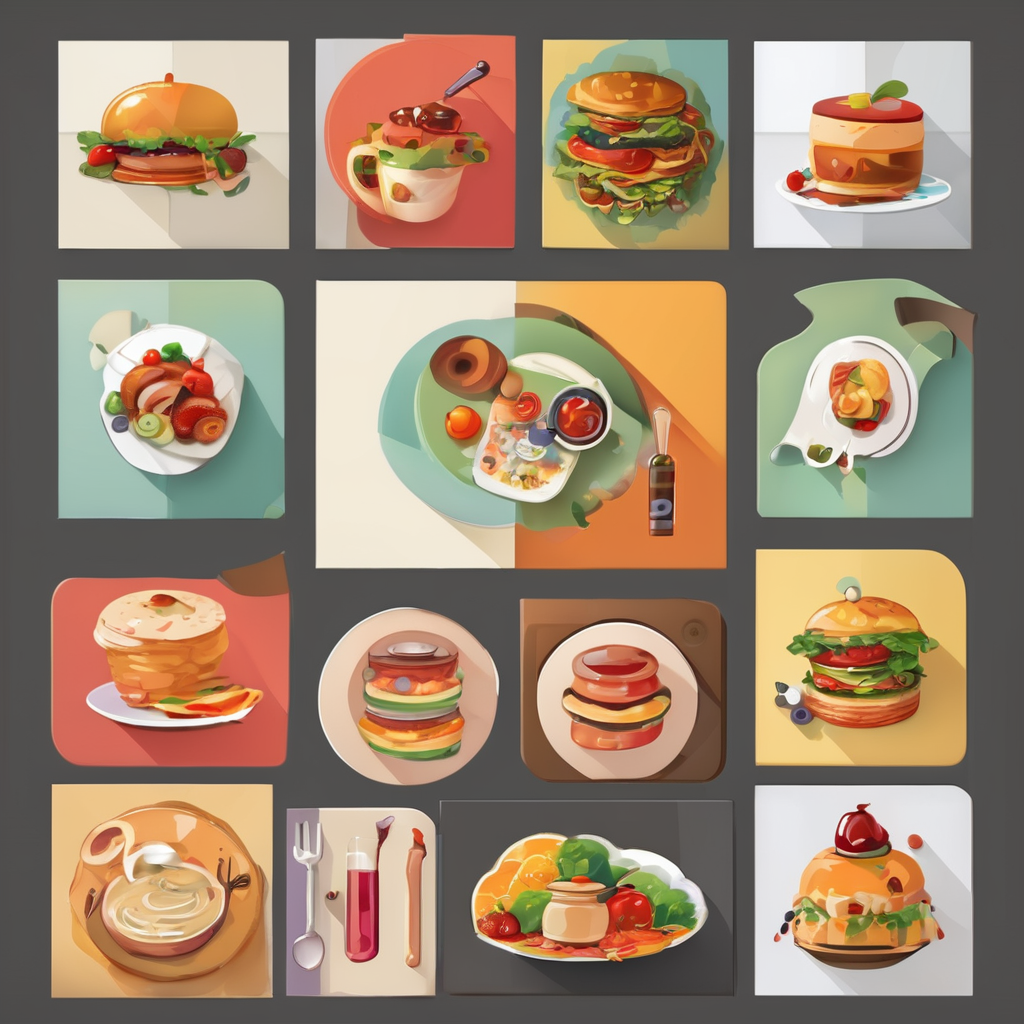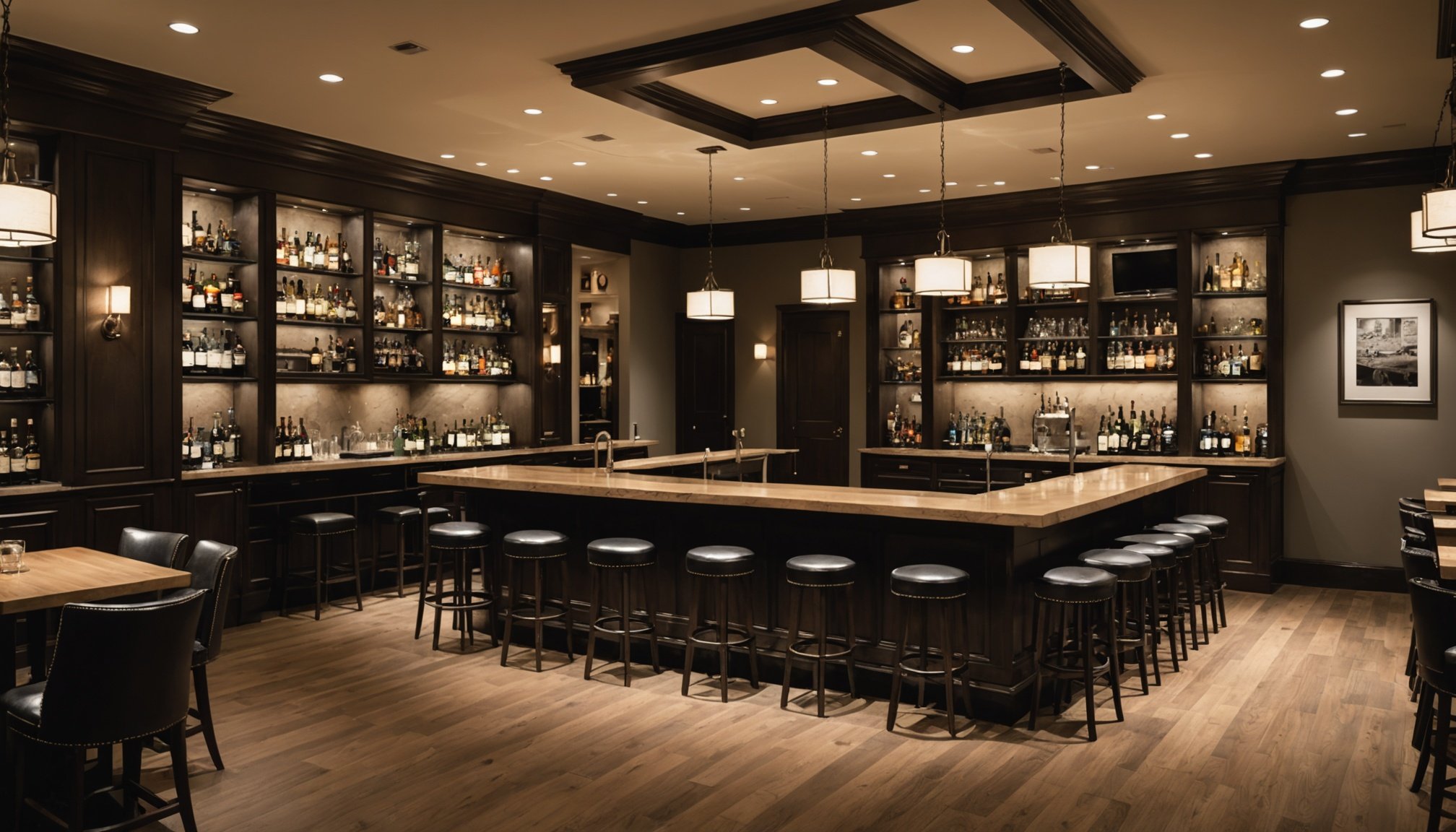Understanding Bar Layout Design
Creating a well-thought-out bar layout design is crucial for a bar’s success. It can significantly enhance service efficiency and improve the overall customer experience. A meticulously planned layout boosts sales by enabling faster service and creating an appealing environment where customers feel comfortable.
Service efficiency is at the core of an effective bar layout. A bar should be structured to streamline operations, allowing bartenders to serve customers efficiently without unnecessary movements. This means that the bar should be logically organized, with each element in its optimal place to avoid clutter and congestion. A clear, intuitive design helps in reducing staff fatigue and increasing productivity.
This might interest you : Top Insider Secrets to Choosing the Ultimate Premium Meat Supplier for Your Steakhouse
A vital aspect of bar layout design is the thoughtful placement of key elements. This includes the positioning of the bar counter, seating arrangements, and storage spaces. Each of these components should harmonize with the others, creating a seamless operation that caters to the needs of both staff and customers.
Common pitfalls often include overcrowded spaces and poor visibility which can hinder customer experience. Avoiding these pitfalls involves identifying potential bottlenecks and ensuring that pathways are clear. A combination of strategic planning and creative design can transform a bar from merely functional to remarkably customer-friendly.
Also to see : Mastering Pristine Draft Beer Lines: Expert Tips for Flawless Craft Brewery Maintenance
Space Management Strategies
Effective space optimization is essential in maximizing limited bar space, enhancing both service efficiency and the customer experience. By implementing intelligent zoning, various areas can be dedicated for specific functionalities, thus streamlining operations and maintaining a pleasant atmosphere.
Techniques for Maximizing Limited Space
Incorporating modular furniture or movable partitions can significantly enhance flexibility. For instance, counters and seating can be rearranged to suit different times of the day or particular events. This adaptability ensures that the space can be tailored to meet varying customer expectations while maintaining efficient usage.
Importance of Zoning Areas
Zoning particular sections of the bar for preparation, serving, or seating can alleviate congestion and improve staff productivity. By clearly defining these areas, staff can perform tasks with minimal interference from other operations, thereby increasing service speed. Moreover, customers benefit from designated spaces that enhance their comfort and ease of movement.
Creating a balance between service efficiency and customer comfort is crucial. Overpacking the bar with seats may increase immediate patron capacity but could lead to a cramped environment, reducing overall customer satisfaction. Thoughtful bar design principles, such as maintaining clear pathways and using efficient layouts, ensure a seamless operation that caters to both staff needs and customer preferences.
Workflow Efficiency in Bar Operations
Achieving optimal workflow efficiency in bar operations is essential to boost staff efficiency and enhance service speed. An intricate understanding of these elements can significantly elevate a bar’s service standards.
Staff Movement
Staff movement plays a critical role in the operations of a bar. It’s important to analyze and streamline these movements to reduce bottlenecks and expedite service. Efficient routes and clear paths facilitate uninterrupted staff flow, ensuring more time is spent tending to customers rather than navigating obstacles. By designing a layout that minimises back-and-forth movement, the bar environment becomes more functional and less chaotic.
Equipment Placement
Strategic equipment placement is crucial for an efficient workflow. Positioning commonly used tools and machinery within easy reach reduces time spent retrieving them, allowing bartenders to serve swiftly. For example, placing the cash register and mixing stations at strategic points ensures that the team doesn’t have to move excessively, maintaining a steady service pace.
Task Management
Implementing effective task management systems can greatly enhance service delivery. Assigning specific roles or responsibilities to each team member minimizes confusion and overlap, leading to a more cohesive operational flow. Furthermore, technology that aids in task scheduling and prioritization can streamline operations, ensuring a smoother, faster service process.
Enhancing Customer Flow
An efficient customer journey is paramount for any bar aiming for customer satisfaction and business success. Thoughtful flow design ensures that patrons can navigate the space easily, enhancing their overall experience. Ensuring clear pathways from entry to seating, to the bar counter, is vital for seamless movement.
Strategically designed pathways are crucial. They should be distinct, not only for the customer experience but also to enhance bar accessibility. Avoiding congestion points by creating accessible entry and exit points allows for a straightforward customer journey. Pathways should accommodate both the swift movement of staff and the leisurely pace of patrons.
Integrating visual cues such as signage and lighting can significantly improve customer navigation. These elements help guide patrons intuitively, ensuring they know where to find essential areas like seating, restrooms, and exits. The bar’s layout should integrate such cues seamlessly to maintain aesthetic appeal while serving a practical purpose.
Ultimately, successful flow design contributes to a welcoming atmosphere and enhances service efficiency. With clear paths and smart accessibility features, the bar becomes more inviting and can cater to a larger, more satisfied clientele.
Creating an Inviting Atmosphere
The creation of a captivating bar ambiance is fundamental to elevating the customer experience. Effective visual design incorporates elements such as lighting, color, and décor, shaping the initial impression and mood of the bar. Implementing adjustable lighting can craft different atmospheres throughout the day, accommodating varied customer preferences.
Lighting plays a pivotal role in determining the bar’s aura. Soft, warm lights can create a cozy, intimate setting, while bright, vibrant lights might energize the space, appealing to younger crowds. Selecting appropriate colors further enhances the customer experience by evoking specific emotions. Hues like deep reds or blues can suggest sophistication, while brighter tones like yellows and greens convey a lively and welcoming vibe.
Décor is the anchor that ties visual elements together. Whether employing vintage memorabilia or sleek modern art, choosing décor that aligns with the bar’s theme enhances its appeal. It’s crucial that the bar ambiance resonates with the target audience‘s taste, creating an environment where guests feel comfortable and engaged. Regularly updating décor to reflect current trends while maintaining a harmonious theme can significantly enhance the bar’s overall attractiveness, ensuring a consistent customer experience.
Case Studies of Successful Bar Layouts
Successful Bar Examples
Exploring successful bar examples can provide valuable insights into effective bar layout design. These cases highlight impressive use of space optimization and thoughtful customer flow planning. A notable example is a compact bar in downtown London, renowned for maximizing limited space through clever zoning and modular furniture, enhancing both service efficiency and customer comfort.
Layout Analysis
In the realm of layout analysis, understanding how these successful bars are structured can reveal the secrets to their triumph. Key elements often include strategic equipment placement and clear flow design. For instance, a bustling New York bar optimized staff workflow by minimizing back-and-forth movement, placing mixing stations and cash registers efficiently within reach, thus enhancing service speed.
Best Practices
Adopting best practices from these examples can significantly improve bar operations. Emphasizing comprehensive layout planning and ensuring visible visual cues boost customer experience. As demonstrated by a prominent Tokyo bar, balancing bar ambiance with practicality led to a substantial increase in clientele, showcasing the remarkable impact of considering the customer journey. These examples underscore the transformative power of innovative and precise bar design principles.
Expert Insights and Tips
Amassing insights from industry experts is pivotal to mastering bar layout design. Professionals agree that a meticulously crafted layout can significantly enhance both service efficiency and the customer experience. Experts underscore the importance of assessing workflow dynamics, advocating for strategic zoning and efficient space optimization to streamline operations.
Expert Opinions
Renowned designers emphasize that intuitive flow design is integral to a bar’s success. This careful planning minimises bottlenecks, thereby boosting service speed and improving patrons’ overall experience. Harmonizing staff routes with customer pathways ensures seamless movement throughout the establishment.
Design Recommendations
For practical application, seasoned bar consultants advise the strategic placement of key elements such as equipment and furniture. This removes unnecessary obstacles, facilitating a smoother customer journey. To truly excel, bars should prioritize a layout that complements their unique ambiance, further enriching the customer experience.
Industry Standards
Keeping pace with industry trends is vital. This includes adopting sustainable practices and incorporating modern technology, like digital ordering systems. Staying informed about emerging concepts in bar design principles allows for continued innovation and adaptation to evolving consumer preferences.
Implementing these practices, grounded in expert advice, ensures your bar is not only aesthetically appealing but also operationally efficient.

